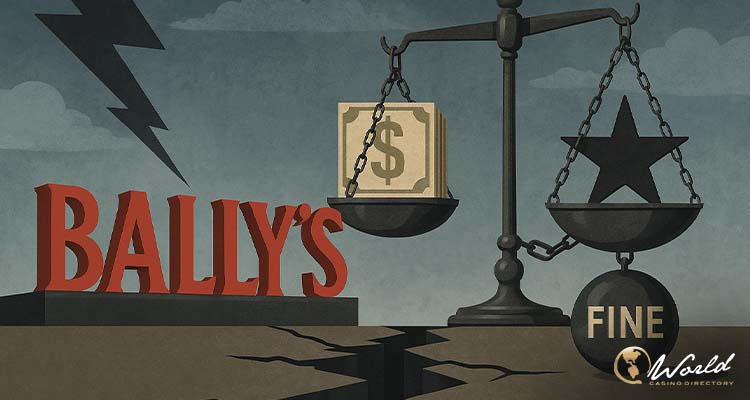Bally’s Corporation may be forced to pull out of its AU$300 million (US$195 million) rescue plan for Star Entertainment Group if a substantial fine from Australia’s anti-money laundering agency, AUSTRAC, renders the casino operator insolvent. Bally’s chairman, Soo Kim, cautioned that the company’s commitment hinges on Star’s financial stability.
Bally’s Star deal uncertain as solvency concerns mount:
The proposed investment—a joint effort between Bally’s and Bruce Mathieson’s Investment Holdings—was approved by Star shareholders last week. However, the company has since warned that any AUSTRAC fine exceeding AU$100 million could place its survival in jeopardy.
Kim emphasized, “One of the conditions precedent to our making the final investment and converting is that the company is solvent.” He explained that while a solvency assessment had been made based on available facts at the time of the deal’s announcement, a significant shift in those facts—such as a penalty on the scale of Crown Resorts’ AU$450 million settlement in 2023—could drastically alter their position.
“We obviously got a solvency opinion based on what we thought were the facts at the time our deal was announced but if those facts change dramatically then the facts change dramatically,” Kim said. “We are looking forward to getting involved and converting our debt to equity, exerting the influence that we believe this company needs to turn around, but there are scenarios where we are not going to be able to do that.”
The AU$300 million bailout includes a mix of convertible notes and subordinated debt. Bally’s portion totals AU$200 million, while Mathieson’s Investment Holdings contributes the remaining AU$100 million. Should the deal go through as structured, Bally’s would assume a 38% stake in The Star, with Mathieson taking approximately 23%.
Yet that entire arrangement could collapse if AUSTRAC imposes a fine in the range that has been speculated. According to Star’s legal representative Steven Finch, any penalty over AU$100 million would cast serious doubt on the company’s ability to continue operating. In a submission to the Federal Court, Finch stated that such a fine would raise “serious doubt” about The Star’s ability to survive as a business.
Kim acknowledged a widely held view that AUSTRAC is unlikely to impose a penalty so steep as to destroy a business entirely. “We’ve heard that too,” he commented when asked if the agency avoids bankrupting its targets, as reported by The Australian.
Asset strategy and operational setbacks:
While the rescue proposal was still under consideration, Star’s Hong Kong-based partners withdrew from their earlier agreement to acquire the company’s 50% interest in the newly launched Queen’s Wharf Brisbane integrated resort. That move raised further concerns about the group’s financial outlook and the viability of asset retention.
Discussing asset strategy, Kim indicated that he would prefer to keep the Brisbane property, along with the existing Sydney and Gold Coast locations, under unified control. “If the company is able to get that deal done … we will support that but from our No.1 perspective we believe that these assets work together and the problems faced by one are faced by all three. We plan to solve those problems and we would like to manage Brisbane. We are prepared and moving forward with our own plan as if the assets are to be managed as a whole.”
Star’s broader business continues to suffer setbacks. The company reported a third-quarter operating loss due to multiple pressures, including weaker footfall, post-cyclone disruptions, and stricter regulatory constraints. Its Q3 earnings before interest, tax, depreciation and amortisation (EBITDA) showed a loss of AU$21 million, with total revenue slipping to AU$271 million—a 9% decline from the previous quarter and 35% year-on-year.


